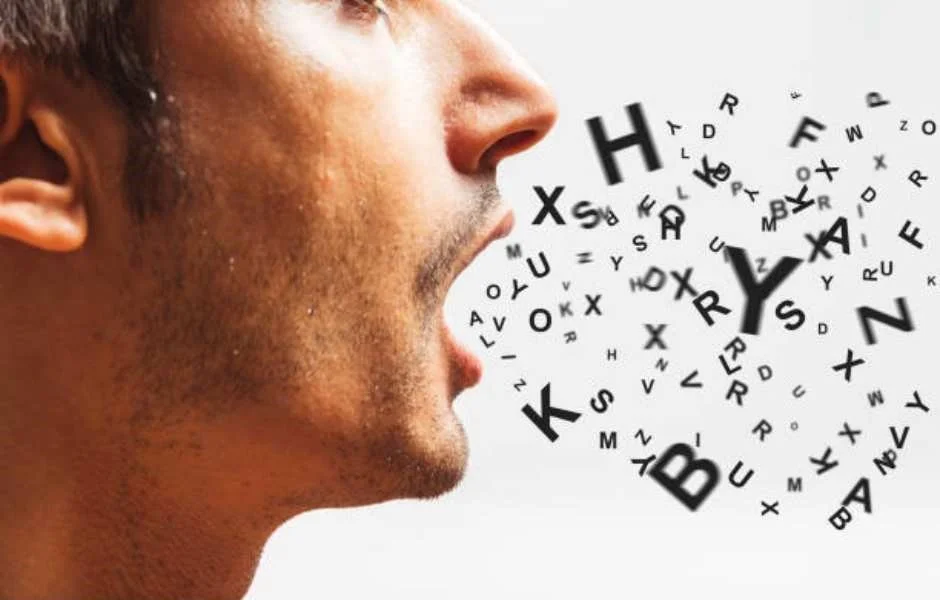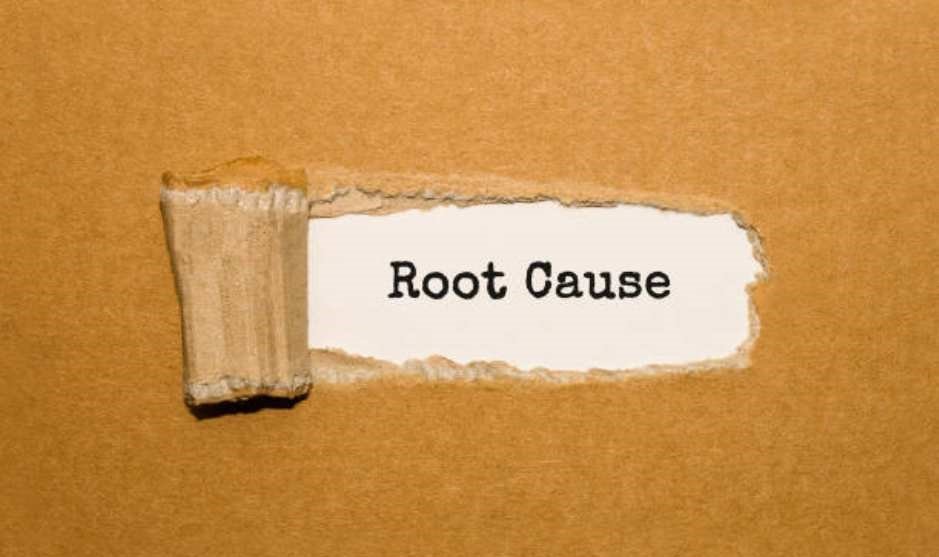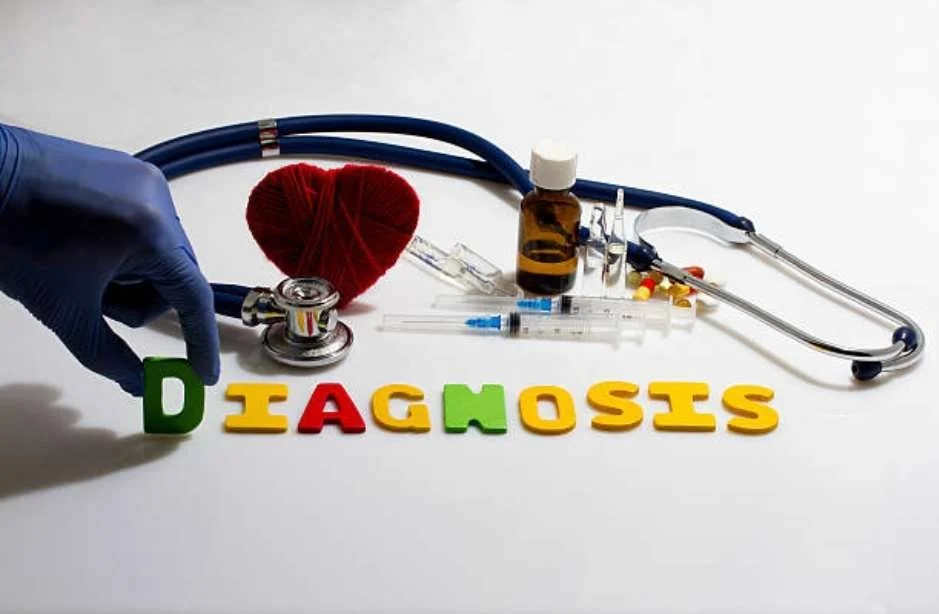Spasmodic Dysphonia Treatment: Addressing a Shaky Voice
Struggling with a voice that breaks or trembles can be deeply frustrating and embarrassing, especially for those living with spasmodic dysphonia. This chronic voice disorder can significantly disrupt daily life and communication.
The good news is that with accurate diagnosis and effective spasmodic dysphonia treatment, many individuals can manage their symptoms and maintain their quality of life.
Key Takeaways:
Spasmodic Dysphonia Overview: Spasmodic dysphonia is a chronic voice disorder characterized by involuntary spasms of the vocal cords (housed within the voice box), causing a shaky, strained, or breathy voice.
Types of Spasmodic Dysphonia: There are three types of spasmodic dysphonia: abductor (breathy voice), adductor (strained voice), and mixed (combination of both).
Symptoms and Impact: Symptoms of spasmodic dysphonia include voice tremors and increased effort while speaking. This condition can lead to communication challenges and social isolation.
Diagnosis: The diagnosis involves fiber-optic nasolaryngoscopy, a detailed medical history, and neurological evaluations to differentiate it from other voice disorders.
Treatment Options: Treatment may include botulinum toxin injection, voice therapy, oral medications, and, in some cases, surgical intervention to manage symptoms and improve voice quality.
Living with Spasmodic Dysphonia: Emotional support, counseling, and communication aids can help patients cope with the disorder and maintain a high quality of life.
Understanding Types of Spasmodic Dysphonia
Symptoms and Impact of Adductor vs. Abductor Spasmodic Dysphonia
Identifying the Root Causes Of Spasmodic Dysphonia
How is Spasmodic Dysphonia Diagnosed
Treatment Options for Spasmodic Dysphonia
Living with Spasmodic Dysphonia: Tips and Support
Understanding Types of Spasmodic Dysphonia
Spasmodic dysphonia (SD) is a lifelong condition characterized by involuntary spasms of the vocal folds, causing voice breaks and vocal tremors that may worsen over time.
Voice characteristics include voice breaks, tremors, and strain, creating an often choppy, breathy, or shaky quality.
This voice problem typically occurs in individuals between the ages of 30 and 50 and is more prevalent in women than men.
There are three types of spasmodic dysphonia: abductor, adductor, and mixed, each with its own set of symptoms and characteristics.
Adductor Spasmodic Dysphonia
Adductor spasmodic dysphonia affects approximately 3.5 to 7.0 per 100,000 individuals. It is estimated that around 80-90% of spasmodic dysphonia cases are the adductor type, making it significantly more common than the abductor form.
Adductor spasmodic dysphonia is characterized by involuntary spasms that cause the vocal cords to close too tightly, leading to a strained, strangled voice.
These spasms in the vocal folds make it difficult for individuals to produce clear, smooth speech, as the vocal cords are forced into a tightly closed position during speaking.
Abductor Spasmodic Dysphonia
Abductor spasmodic dysphonia is marked by vocal fold spasms that cause the cords to open too wide, resulting in a weak, breathy voice. This occurs when the muscles responsible for opening the vocal cords during speech are affected, leading to sudden breathy or whispering voice breaks when the voice sounds breathy.
The primary cause of abductor spasmodic dysphonia is spasms that force the vocal folds to stay open, preventing them from vibrating correctly.
Mixed Spasmodic Dysphonia
Mixed spasmodic dysphonia involves both abductor and adductor spasms, causing a combination of voice symptoms. The manifestations of mixed spasmodic dysphonia include speech sounds that are weak, quiet, and breathy, as well as a strained, tight, or breathy voice.
The precise origin of mixed spasmodic dysphonia is yet to be determined. Still, it is speculated to be a disorder of the central nervous system originating from an issue in the basal ganglia of the brain.
Symptoms and Impact of Adductor vs. Abductor Spasmodic Dysphonia
Spasmodic dysphonia can significantly impact an individual’s ability to communicate, with symptoms differing depending on whether it is adductor or abductor in nature. Understanding these distinctions can help individuals recognize the type of dysphonia they are experiencing and seek the appropriate treatment.
Adductor Spasmodic Dysphonia (ADSD)
This is the more common form of spasmodic dysphonia, where spasms cause the vocal cords to close too tightly.
Shaky, strained, or strangled voice: Speech often sounds forced, with a tight or squeezed quality.
Difficulty starting or sustaining words: Spasms make it hard to produce certain sounds, causing words to sound cut off or interrupted.
Increased effort while speaking: Individuals with adductor spasmodic dysphonia often are required to exert extra effort to force their vocal cords to open, leading to fatigue.
Variations in severity: Symptoms may worsen with stress, fatigue, or certain speaking situations, such as public speaking or talking on the phone.
Abductor Spasmodic Dysphonia (ABSD)
In this less common form, spasms cause the vocal cords to open too widely.
Breathy or weak voice: Speech often sounds airy or weak, with long pauses due to the vocal cords being too far apart.
Difficulty sustaining sound: There may be a struggle to maintain sound, leading to frequent breaks in speech.
Effortless yet ineffective voice production: While speaking may feel less strained, the result is often poor volume and clarity, which can be frustrating.
Variations in severity: Symptoms may worsen in quiet environments or during longer conversations as maintaining voice control becomes more difficult.
Impact on Daily Life
Limited communication: Difficulty speaking clearly can hinder meaningful interactions at work, school, and social settings.
Isolation and anxiety: Frustration and embarrassment around your voice can lead to social withdrawal and emotional distress.
Reduced job opportunities: Communication is crucial for many careers, and spasmodic dysphonia can create barriers to professional success.
Impact on mental health: Chronic challenges with communication can affect self-esteem and overall well-being.
Identifying the Root Causes Of Spasmodic Dysphonia
The root cause of spasmodic dysphonia isn't just one factor; it's a complex mix of potential culprits, each playing a unique role in this "shaky voice" disorder. One key player is how our brains handle voice production. Misfiring signals can lead to uncontrollable muscle spasms in the vocal cords, causing a vocal tremor.
Research suggests abnormal brain activity sends "glitchy" messages to the vocal folds, making them vibrate abnormally and causing the voice to tremble. Additionally, genes appear to hold a hand in this disorder. Some people inherit a "spasmodic dysphonia susceptibility gene," increasing their risk. Understanding these genetic links helps us see how nature and nurture work together in this condition.
Another facet is physical injury. Damage to the delicate voice muscles can cause "breaks," tightness, and strain, making spasms more likely. Whether from direct injury or overuse, compromised vocal cords become vulnerable to spasmodic dysphonia.
Stress and anxiety, unfortunately, also play a part. Feeling overwhelmed can worsen the frequency and intensity of spasms, making the condition more challenging to manage. This connection between mental stress and the body's vocal response highlights the importance of emotional well-being for vocal health.
How is Spasmodic Dysphonia Diagnosed
Accurate diagnosis of spasmodic dysphonia is fundamental for effective treatment. The diagnostic procedure consists of fiberoptic nasolaryngoscopy, a detailed medical history review, and a neurological evaluation.
Spasmodic dysphonia is strongly linked to neurological issues, with abnormal brain signals potentially triggering muscle spasms. Many other voice disorders have different causes, such as vocal misuse (muscle tension dysphonia), structural issues (vocal nodules), or nerve damage (vocal fold paralysis).
Fiberoptic Nasolaryngoscopy
The fiberoptic nasolaryngoscopy procedure allows for a detailed examination of the vocal cords, while the medical history and neurological evaluation help identify any underlying neurological problems or other potential causes of voice issues.
Fiberoptic nasolaryngoscopy is a diagnostic procedure that utilizes a camera inserted through the nose to examine the vocal cords. During the process, a small flexible telescope is passed through the nose and into the throat to inspect the nose, throat, and airway. Visualization of the vocal folds is made as the vocal cords vibrate. This quick procedure can be completed in a doctor's office in 5 to 10 minutes.
Medical History and Neurological Evaluation
A detailed medical history and neurological assessment by otolaryngologists (ENTs) and speech-language pathologists (SLPs) are essential to accurately identifying any underlying neurological conditions or other potential causes of voice disturbances. The medical history typically yields information such as:
Patient symptoms
Duration and progression of symptoms
Voice triggers
Medical and family history
Medications and treatments
Impact on daily life
Neurological examinations, perceptual analysis, acoustic analysis, aerodynamic analysis, and electromyographic analysis are typically conducted.
Treatment Options for Spasmodic Dysphonia
Spasmodic dysphonia can be treated through a variety of methods, and the specific type of dysphonia—adductor or abductor—plays a crucial role in determining the most effective treatments. Below are the key treatment options available:
Treatment Options for Adductor Spasmodic Dysphonia (ADSD)
Botulinum Toxin Injections
Botulinum toxin injections are the most common and effective treatment for adductor spasmodic dysphonia. This treatment temporarily weakens the muscles that cause the vocal cords to close too tightly. The injections, guided by electromyography (EMG), provide relief for three to four months but require repeat treatments to maintain results.
Initial side effects of botulinum toxin management may include a temporarily weak or breathy voice and occasional difficulty swallowing. These side effects typically subside within a few days to weeks, and most patients experience a noticeable improvement in voice quality shortly after. Regular follow-ups are necessary to adjust dosage and timing to ensure continued symptom management.
Voice Therapy
Voice therapy can help manage adductor spasmodic dysphonia symptoms, particularly when combined with botulinum toxin injections. A speech-language pathologist can teach individuals with spasmodic dysphonia to improve respiratory control, reduce laryngeal tension, and optimize breath support during speech.
Oral Medications
Oral medications, including benzodiazepines, anticholinergics, and dopamine antagonists, are occasionally used to treat adductor spasmodic dysphonia. However, they are generally less effective than botulinum toxin injections and may carry side effects such as drowsiness, depression, and cognitive impairment.
Surgical Treatments
Surgical interventions, such as recurrent laryngeal nerve resection, are considered for patients with severe adductor spasmodic dysphonia when other treatments fail. While surgery can reduce spasms, it may result in long-term voice changes and is typically not a first-line treatment.
Treatment Options for Abductor Spasmodic Dysphonia (ABSD)
Voice Therapy
Voice therapy is often the first line of treatment for abductor spasmodic dysphonia management. It focuses on improving breath control and pitch modulation, helping patients regain better vocal control and reduce breathiness. Speech-language pathologists can also teach relaxation techniques to ease muscle tension.
Botulinum Toxin Injections
Botulinum toxin injections can be used for abductor spasmodic dysphonia, though they are generally less effective compared to their use in abductor spasmodic dysphonia. However, because botulinum toxin treatment specifically targets muscles that cause excessive contraction, it is more effective in treating adductor spasmodic dysphonia, where the vocal cords close too tightly, leading to a strained or strangled voice.
Surgical Treatments
Surgical treatments, such as thyroplasty type II or recurrent laryngeal nerve surgery, can be considered for severe cases of abductor spasmodic dysphonia. These procedures aim to alter the position of the vocal cords or sever the nerve responsible for opening the cords. Surgery may offer longer-term relief but is usually reserved for individuals who don’t respond to other treatments.
Behavioral and Relaxation Techniques
Stress and anxiety can worsen abductor spasmodic dysphonia symptoms, so behavioral therapies like cognitive-behavioral therapy (CBT) and relaxation techniques can help patients manage their condition more effectively. These therapies focus on reducing overall tension and addressing the psychological impacts of living with a voice disorder.
Each treatment option for spasmodic dysphonia, whether for ADSD or ABSD, aims to improve vocal quality and reduce symptoms. Treatment plans may vary, and some individuals may require a combination of therapies to achieve the best results. Consultation with a specialist is essential for determining the most appropriate course of action.
Living with Spasmodic Dysphonia: Tips and Support
While living with spasmodic dysphonia can pose challenges, there are methods to manage the disorder and sustain a high quality of life. Some strategies include:
Counseling, which can provide emotional support and validation
Support groups, where individuals can connect with others facing similar challenges and share coping strategies
Communication aids, such as speech therapy or assistive devices, can help improve communication and daily living
These methods can help individuals with spasmodic dysphonia manage their symptoms and enhance their overall well-being.
Participating in support groups can also help individuals feel less isolated and more empowered in their journey with spasmodic dysphonia.
Finding the Right Specialist
Finding an appropriate specialist, like a laryngologist or speech-language pathologist, is necessary for precise diagnosis and effective treatment of spasmodic dysphonia. Professionals with experience in diagnosing and treating vocal cord injuries, including spasmodic dysphonia, will be better equipped to provide the appropriate care and management strategies.
To find a reputable specialist, consider asking for recommendations from:
your primary care physician
local hospitals or medical centers
support groups
organizations dedicated to spasmodic dysphonia
Frequently Asked Questions About Spasmodic Dysphonia
1. What triggers spasmodic dysphonia?
Spasmodic dysphonia (SD) is thought to be triggered by a disruption in the brain and nervous system, particularly in the areas that control the muscles responsible for speech. While the exact cause is still unclear, SD is considered a neurological disorder where abnormal signals from the brain lead to involuntary spasms in the vocal cords.
Stress, fatigue, and emotional factors can worsen symptoms, but the underlying issue lies in how the brain communicates with the vocal muscles through the nervous system. Managing these triggers is key to reducing the severity of symptoms.
2. What is the most effective treatment option for spasmodic dysphonia?
The most effective treatment for spasmodic dysphonia is botulinum toxin injections, particularly for adductor spasmodic dysphonia (ADSD). These injections temporarily weaken the overactive vocal cord muscles, reducing spasms and improving voice quality.
For abductor spasmodic dysphonia (ABSD), botulinum toxin is less effective, and treatments such as voice therapy or surgical options may be more beneficial. The effectiveness of treatments varies depending on the type of SD and the individual's specific symptoms.
3. How do you treat spasmodic dysphonia naturally?
Unfortunately, there's no scientifically proven "natural" cure for spasmodic dysphonia. However, specific lifestyle changes and vocal hygiene practices, like reducing stress, getting enough sleep, and avoiding vocal strain, can sometimes show mild improvements in symptom management.
Consulting a speech-language pathologist for personalized strategies remains crucial for effectively managing the condition.
4. Is spasmodic dysphonia a central nervous system disorder?
While the exact cause is unknown, SD is strongly linked to central nervous system dysfunction. Abnormal brain signals potentially trigger muscle spasms in the vocal cords. Research suggests specific areas involved in controlling voice movement and coordination may be affected.
5. Is spasmodic dysphonia a movement disorder?
Yes, spasmodic dysphonia is considered a focal movement disorder that affects the muscles involved in speech. It is caused by involuntary spasms in the vocal cords, which result from miscommunication between the brain and the nervous system. These spasms disrupt the normal movement of the vocal cords, leading to voice breaks, strain, or breathiness during speech. Like other movement disorders, it is neurological in origin.
How Connected Speech Pathology Can Help
If spasmodic dysphonia disrupts your voice and confidence, Connected Speech Pathology offers expert support to empower you on your journey to clearer communication. We understand the challenges of living with spasmodic dysphonia, and our specialized speech-language pathologists use evidence-based approaches to help you:
Reduce involuntary muscle spasms: Through targeted vocal exercises and relaxation techniques, we can help manage the physical aspects of SD and improve vocal control.
Find alternative communication strategies: We explore communication aids and augmentative techniques to ensure your voice is always heard, boosting your confidence and social interaction.
Navigate emotional impact: We provide psychological support and counseling to manage the frustration and anxiety associated with SD, aiding your overall well-being.
Connected Speech Pathology:
Offers flexible scheduling and telehealth options for convenient care.
Collaborates closely with you and your support network for a personalized approach.
Utilizes cutting-edge techniques and stays abreast of current research.
Don't let SD silence your voice. Take the first step towards clearer communication and regain control by contacting Connected Speech Pathology today!
Summary
In conclusion, spasmodic dysphonia is a complex and chronic voice disorder that can significantly impact an individual's daily life. Accurate diagnosis and effective treatment are essential for managing symptoms and maintaining quality of life.
By understanding the condition, exploring available treatment options, and finding the right specialist, individuals with spasmodic dysphonia can take control of their voices and continue to live fulfilling lives.
About the Author
Allison Geller is a speech-language pathologist (SLP) and the owner of Connected Speech Pathology. She obtained her Bachelor’s and Master’s degrees from the University of Florida in Speech-Language Pathology. Allison has practiced speech therapy in a number of settings including telepractice, acute care, outpatient rehabilitation, and private practice. She has worked extensively with individuals across the lifespan including toddlers, preschoolers, school-aged children, and adults. She specializes in the evaluation, diagnosis, and treatment of a variety of communication disorders including receptive/expressive language disorders, articulation disorders, voice disorders, fluency disorders, brain injury, and swallowing disorders.
Allison served as the clinical coordinator of research in aphasia in the Neurological Institute at Columbia University Medical Center in New York. She is on the Board of Directors for the Corporate Speech Pathology Network (CORSPAN), a Lee Silverman Voice Treatment (LSVT) certified clinician, and a proud Family Empowerment Scholarship/Step-Up For Students provider. Allison is passionate about delivering high quality-effective treatment remotely because it’s convenient and easy to access. What sets us apart from other online speech therapy options is—Allison takes great care to hire the very best SLPs from all over the country.










